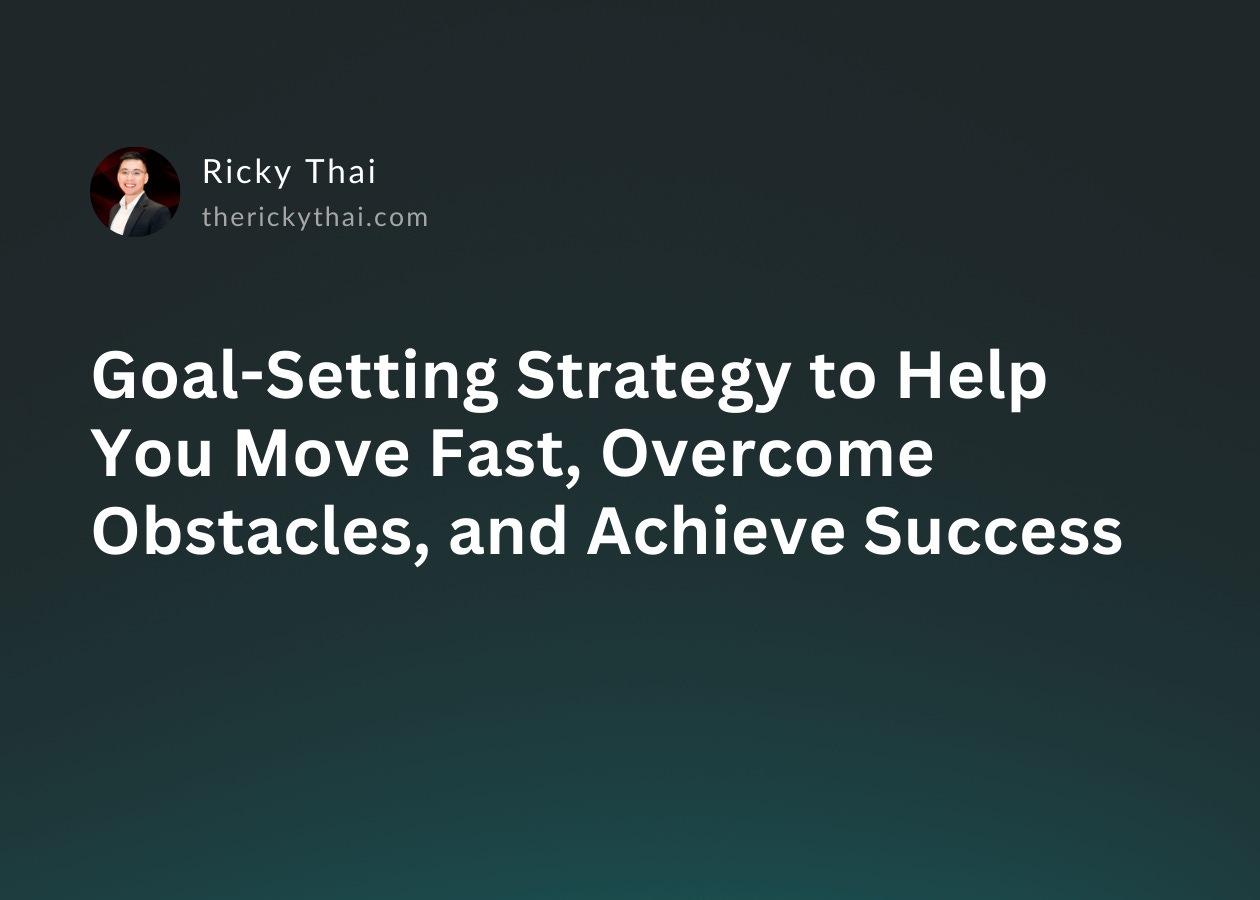Goal-Setting Strategy to Help You Move Fast, Overcome Obstacles, and Achieve Success
Most people get goal-setting wrong.
They rely on business frameworks like SMART goal-setting and apply them to everything they do until it stops working or becomes irrelevant.
As Charlie Munger said, “To the man with only a hammer, every problem looks like a nail.”
Your SMART goal-setting framework is that hammer, but not every problem is a nail.
SMART goals were initially developed by George T. Doran in 1981 to help managers establish clear and attainable goals with a timeline to achieve their targets.
However, SMART goals do not address the problems you will encounter along the way or how to prioritize these issues in advance before starting the project.
In my experience, this framework didn’t work for me when applied to academics, weight loss, starting a company, building a business, sports, or various other fields.
What works for me is this: goal-setting simply involves the following:
• Defining the goal you want to achieve.
• Listing the steps you must take to achieve it.
• Identifying the problems you are facing and will face along the way—addressing these problems in advance and developing your knowledge to solve them.
The first two steps are obvious: know your goals and know the steps (you may need advice from others).
However, the third step is the most important.
Problems often don’t appear in plain sight; you have to really sit down and identify them to address them effectively.
In this process, you need to think through potential obstacles and seek out experienced mentors to solve these problems before taking action. Developing awareness of these problems in advance will help you be ready to solve them once you’re executing your steps and working toward your goal.
Here are two examples of goal-setting: one from a fitness experience and the other from building a business.
Define the Goal
This should be straightforward.
Let’s say you set a goal to lose weight - suppose you are at 200 pounds and want to reduce to 150 pounds.
That’s a fifty-pound reduction you need to accomplish.
Goal: Lose 50 pounds (from 200 to 150)
Define the Steps
So, that’s your goal above. Now, what can be the steps?
Work out every day for 45 minutes.
Ensure your diet and nutrition are low-carb, high-protein, low-fat, and eliminate processed food.
Follow a daily schedule and give yourself a 3-month timeline.
Check your weight every day for self-accountability.
Find a coach to hold you accountable, checking in weekly or daily, depending on your progress.
But knowing the steps is not enough.
Identify the Key Problems
You need to identify the problems along the way, which is something most of us don’t anticipate, can’t foresee, or don’t plan for.
Let’s say you don’t have money to afford a coach.
Ok, what is your budget? Your budget is the key problem you need to solve before executing the steps (you will run into this at step 5). Once you plan your budget, then find a coach you can afford, even if it’s only once a month.
Or.
If your diet and nutrition contain too much unhealthy food (you will run into this at step 2), identify who prepares your food. If it’s you, then start buying healthy food, go to healthier restaurants, or start learning about nutrition.
What About in Business?
Let’s say you want to start a business and sell a product to 1000 customers—that’s your goal. Now:
What steps do you need to take? And.
What problems do you need to solve to reach 1000 customers?
Starting a business is much harder than losing weight because it involves more technical skills, even risks, and uncertainties. Therefore, you need to seek out different experts, business owners, and entrepreneurs who have achieved this goal. They can provide insights into the problems, including challenges and obstacles, you might face.
Once you address the problems, you can move through the steps with adequate knowledge to accomplish your goal.
The road to accomplishing your goal involves taking the necessary steps and solving key problems along the way.


